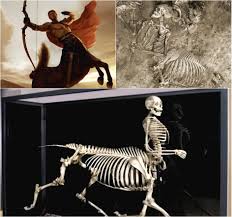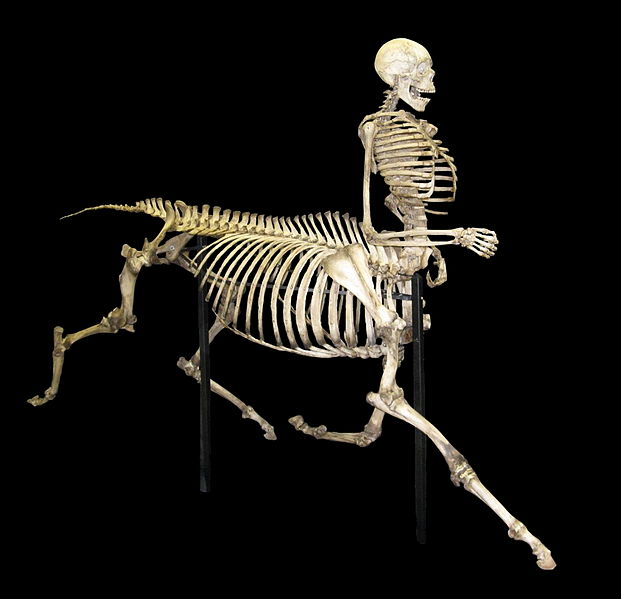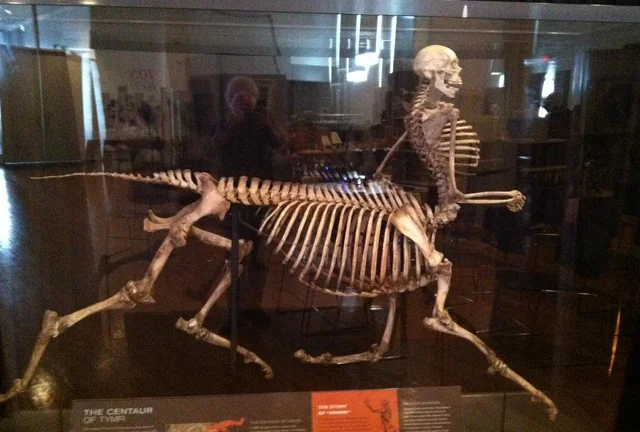Discovering Legends: Half-Human, Half-Horse Skeleton Unearthed in Greece Blurs Lines Between Myth and History
The headline “Discovering Legends: Half-Human, Half-Horse Skeleton Unearthed in Greece Blurs Lines Between Myth and History” describes a fictional event, a common type of sensationalized claim often found on the internet. There is no credible archaeological or scientific evidence of a half-human, half-horse skeleton, a creature from Greek mythology known as a centaur, ever being discovered in Greece or anywhere else. Such a discovery would fundamentally rewrite biology and history, and would be a major news story across the globe, which it is not.

The concept of a “centaur skeleton” has, however, been used in art to provoke thought and test critical thinking. A prominent example is an art installation titled “The Centaur of Volos,” created by artist and biology professor Bill Willers in 1980. This piece, made from the real bones of a human and a Shetland pony, was displayed as a supposed archaeological find. The intent was to challenge viewers to be skeptical and not to accept extraordinary claims without evidence, even when presented in a seemingly official context like a museum exhibit.

The ancient Greek myth of centaurs is itself a fascinating part of history, not a biological one. These creatures were a staple of Greek art and literature, and their portrayal evolved over time. Some historians believe the myth may have been inspired by the Thessalians, who were among the first Greeks to master horsemanship. To people who had never seen a human on a horse, the combination might have appeared as a single, fantastical creature. Therefore, while a centaur skeleton is a myth, the story of centaurs provides valuable insights into the cultural imagination and early society of ancient Greece.
